#romanian shepherds
Text

Badea Cârțan (1849-1911)
Badea Cârțan made a journey on foot to Rome, and when he arrived at the city's edge after 45 days, said, "Bine te-am găsit, maica Roma" ("Pleased to meet you, mother Rome").
He wished to see Trajan's Column with his own eyes, as well as other evidences of the Latin origin of the Romanian people.
After pouring Romanian soil and wheat at the column's base, he wrapped himself in a peasant's coat (cojoc) and fell asleep at the column's base.
The next day he was awakened by a policeman who shouted in amazement, "A Dacian has fallen off the column!", as Cârţan was dressed just like the Dacians carved into the column; the event was reported in Roman newspapers and Duiliu Zamfirescu, Romanian representative in Italy.
He was a self-taught ethnic Romanian shepherd who fought for the independence of the Romanians of Transylvania (then under Hungarian rule inside Austria-Hungary), distributing Romanian-language books that he secretly brought from Romania to their villages. In all he smuggled some 200,000 books for pupils, priests, teachers and peasants; he used several routes to pass through the Făgăraş Mountains.
#romania#transylvania#rural#folk clothing#eastern europe#rome#trajan#column#dacian#dacia#travel#travel the world#on foot#history#latin language#peasant#shepherd#Italy#austria hungary#romanian
177 notes
·
View notes
Text

Oakley the Mio
Romanian Rescue, Helping or Hindering?
We adopted our dog four and a half years ago without knowing anything about him or his breed, background or anything. We were given very little information from the charity.
We completed an online form, they called us, asked us some questions about our family and home and we were told we could go and collect him, and so we did.
Looking back that raises so many red flags for me.
No in person home check
No initial visit with the dog to check compatibility
When we collected him, he was just handed over outside of the gates of where he had been staying and told he had a cut near his eye
He was incredibly anxious in the car and barked for the entire journey home. When we got him home we saw that the cut was severely infected, his hair was terribly matted and unkempt and he was filthy. So the next day we took him to the vet and the groomers, we also discovered he had an infection in both ears. We contacted the dog charity and explained the situation and they said they would deduct the vet fee from the adoption fees. But that didn’t explain how a dog that had been in their care for the last few months could be in such a state.
We were added to facebook group for people who had adopted dogs from this charity and with a quick search I discovered that we weren’t Oakley’s first adopted family. I sent a message to the previous owner and asked about Oakley and why they sent him back to the charity. They told me that they couldn’t handle him and he didn’t get on with their other dog.
So with that information we contacted the charity and requested more information about Oakley’s history and this is what we were told.
Oakley was found at roughly three months old tied up in a village in the Carpathian Mountains region of Romania, next to a pond. It was assumed that he had been left by sheep farmers because he is quite small for his breed so he would have been the runt of the litter. Mioritic Shepherd dogs guard thousands of sheep in large packs and are known to fight wolves, bears and lynxes to protect the herd.
He was then neutered at roughly four months old and then when he was six months old he was packed into a van and made the long arduous journey to the UK.
When he reached the UK he was placed in a foster home with nearly forty other dogs, with no segregated facilities for him to have his own space, they were all fed together and basically left to their own devices.
At home with us Oakley showed some food aggression particularly when it involves bones and other fresh food. He was also very underweight. He also had not developed bite inhibition. He would also find gaps in fences and bushes to jump through into the neighbours garden.
He would spend hours hiding under the table trying to be invisible. He detested going in his crate, to the point he injured himself destroying it to get out. To which I said to my husband no more crate. He had serious separation anxiety and would chew on my oak chairs and table.
For months we had to show endless patience and compassion and slowly he began to settle in to his new place with our family.
The one thing he never did was mess inside the house.
He is a very vocal dog and if he needs something he will let you know, whatever the time is, much to the annoyance of our neighbours, who have even suggested that we should have him debarked, to which I replied you get your voice surgically removed then!
The barking is breed specific and nothing can change that, so we figure out what it is that he wants and then he is fine.
Even now he is still an anxious dog especially when it comes to going out in the car. So clearly the journey over here traumatised him and left him scarred for life.
Yet Oakley is classed as one of the lucky ones because he didn’t come from a life on the streets or worse a kill shelter.
So the question I am asking is knowing the trauma Oakley has experienced and the resulting anxiety that he has been left living with, what about the other dogs who have experienced trauma from before the journey from either living on the streets or worse in a kill shelter is it worth adding to that and bringing them over to the UK and expecting inexperienced owners take on these challenges?
All the vets that I have spoken with have said that it is cruel to put the dogs through this and that the journey from Romania to the UK is much more traumatic than living on the streets.
I have a friend from Romania who told me that in the villages the stray dogs are seen as the village dogs, people feed them, children play with them. They don’t keep them inside.
So are we getting involved where we don’t need to be? Are we forcing our beliefs of how animals should be kept as pets onto others? In the farming communities dogs and cats are not pets they are part of the community and they have jobs to do. Cats catch mice and other pests. Dogs herd and protect the sheep and other livestock.
I am not picking a side I am merely providing food for thought.
I personally don’t think kill shelters should be allowed but I am just one person and who am I to challenge a foreign government that allows them.
#Romanian rescue dogs#rescue dog#uk#getting involved#is this right?#moral dilemma#Mioritic shepherd dog#food for thought#comments welcome#no hate
3 notes
·
View notes
Text
Wasn't the melody from a Romanian children/Lullaby song. I thought it was the melody/lullaby from when Wanda sang to them as babies on WandaVision. Hence the tears!

#Wanda Maximoff the Scarlet Witch#Wanda Maximoff#The Scarlet Witch#Scarlet Witch#WandaVision#Multiverse of Madness#Elizabeth Olsen#Wiccan#Speed#Billy Maximoff#Tommy Maximoff#Billy Kaplan Altman#Billy Kaplan#Tommy Shepherd#Julian Hilliard#Jett Klyne#Romanian lullabies
38 notes
·
View notes
Text
#dogs#dogblr#lgd#livestock guardian dog#komondor#great pyrenees#pyrenean mountain dog#maremma#Maremanno-Abruzzese Sheepdog#akbash#kuvasz#cuvac#tatra shepherd#Romanian mioritic shepherd
1 note
·
View note
Text



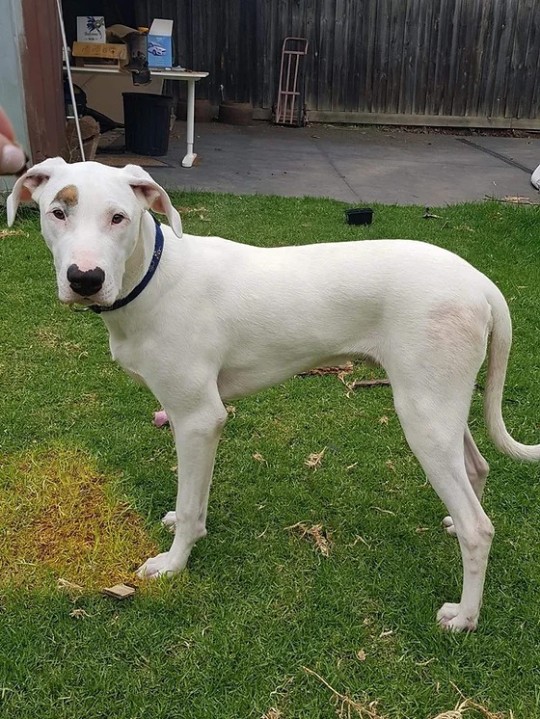

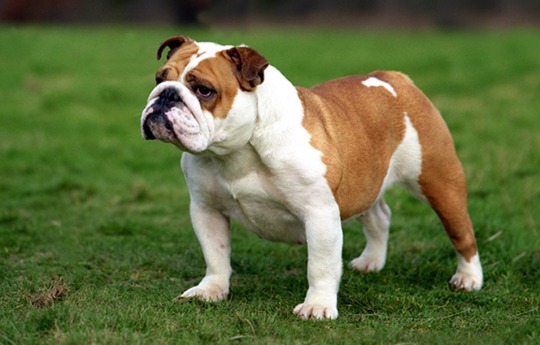



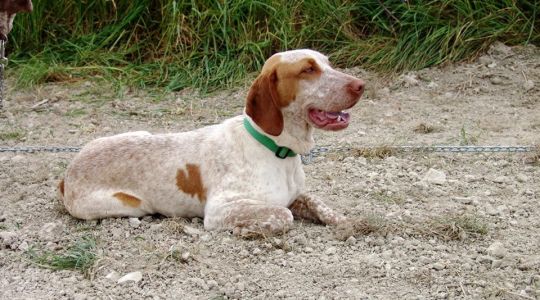
#Romanian Bucovina Shepherd Dog#dog#poll#polls#canine#dog breeds#dogs#domestic#tumblr poll#puppy#Bulgarian Hound#Bulgarian Scenthound#Bull Arab#????#Bulldog#Bullmastiff#Bully Kutta#Burgos Pointer#Ca Mè Mallorquí
0 notes
Text

Romanian shepherd
Back from another year of school!
#character design#artists on tumblr#digital art#illustration#character art#couldn't find much time for art but had a v good school year :) looking forward to drawing again!
999 notes
·
View notes
Text
Gem and pearl in traditional Romanian clothing

Designs by @plutomarigold. The dog is a Romanian shepherd btw.
#Pearlescentmoon#pearlescentmoon fanart#geminitay#geminitay fanart#traficblr#secret life#shiny duo#My art#sorry for the bad quality idk why it’s so pixelated
173 notes
·
View notes
Text
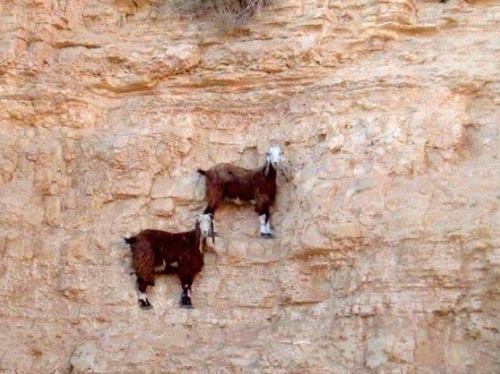
How on earth did these goats get there?
*****
In reality the goats are lying on their sides on rocky ground, looking up at a crane-mounted camera. The photograph was taken some years ago, part of a series reconstructing Central European folk customs and traditions which have fallen from favour or are now prohibited.
This old-fashioned rural blood-sport was originally practiced in parts of Anatolia, Turkey, where the game was called keçi fırlatmak, and also in the Carpathian Alps of Romania, possibly imported during the Ottoman conquest. The name there was aruncarea caprei.
*****
The goats would have been coated in a strong adhesive traditionally distilled from pine resin.(represented pictorially here by darker patches of dye on the flanks) and were then thrown upwards towards a cliff or rock-face with makeshift catapults, often a primitive form of counterweight trebuchet assembled from wooden beams and weighted with rocks.
The game ended when the glue dried and lost adhesion, and the goats fell to their deaths. They were then cooked and eaten, their meat being valued like that of Spanish fighting bulls.
The meat of the last goat to fall (başarılı keçi or cea mai durabilă capră) was prized as a special delicacy and selected cuts from the legs of this particular “winner” goat were often smoked and dried into a kind of jerky.
*****
In his “Grandes Histoires Vraies d'un Voyageur le 1er Avril” (pub. Mensonges & Faussetés, Paris, 1871) French folk-historian, anthropologist and retired cavalry general Gilles-Etienne Gérârd wrote about witnessing a festival near Sighișoara, Transylvania, in 1868.
There he claims to have seen catapults improvised from jeunes arbres, très élastiques et souples - “very springy and flexible young trees” - which were drawn back with ropes and then released.
Bets were placed before the throw, and marks given afterwards, according to what way up the goats adhered and for how long. The reconstruction, with both goats upright, facing outward and still in place, shows what would have been a potential high score.
The practice has been officially banned in both countries since the late 1940s, but supposedly still occurred in more isolated areas up to the end of the 20th century. Wooden beams from which the catapults were constructed could easily be disguised as barn-rafters etc., and of course flexible trees were, and are, just trees.
*****
Gérârd’s book incorrectly calls the goat jerky “pastrami”, to which he gives the meaning "meat of preservation".
While pastrami may be a printing error for the Turkish word bastırma or the Romanian pastramă, both meaning “preserved meat”, at least one reviewer claims that Gérârd misunderstood his guide-translator, who would have been working from rural dialect to formal Romanian to scholarly French.
Since this jerky was considered a good-luck food for shepherds, mountaineers, steeplejacks and others whose work involved a risk of falling, Gérârd's assumption seems a reasonable one.
However, several critical comments on that review have dismissed its conclusion, claiming "no translator could be so clumsy", but in its defence, other comments point out confusion between slang usage in the same language.
One cites American and British English, noting that even before differences in spelling (tire / tyre, kerb / curb etc.) "guns" can mean biceps or firearms, "flat" can mean a deflated wheel or a place to live, "ass" can mean buttocks or donkey and adds, with undisguised relish, some of the more embarrassing examples.
This comment concludes that since the errors "usually make sense in context", Gérârd's misapprehension is entitled to the same respect.
*****
The good-luck aspect of the meat apparently extended to work which involved "falling safely", since its last known use was believed to be in ration packs issued to the 1. Hava İndirme Tugayı (1st Airborne Brigade) of the Turkish Army, immediately before the invasion of Cyprus in July 1974.
Nothing more recent has been officially recorded, because the presence of cameras near military bases or possible - and of course illegal - contests is strongly (sometimes forcefully) discouraged, and the sport’s very existence is increasingly dismissed as an urban or more correctly rural legend.
The official line taken by both Anatolian and Carpathian authorities is that it was only ever a joke played on tourists, similar to the Australian “Drop-bear”, the Scottish “Wild Haggis” and the North American “Jackalope”.
They dismiss the evidence of Gérârd’s personal observation as “a wild fable to encourage sales of his book”, “a city-dweller’s misinterpretation of country practices”, or even “the deliberate deception of a gullible foreigner by humorous peasants”.
And as for those paratroop ration packs, Turkish involvement in Cyprus is still such a delicate subject that the standard response remains “no comment”.
82 notes
·
View notes
Text



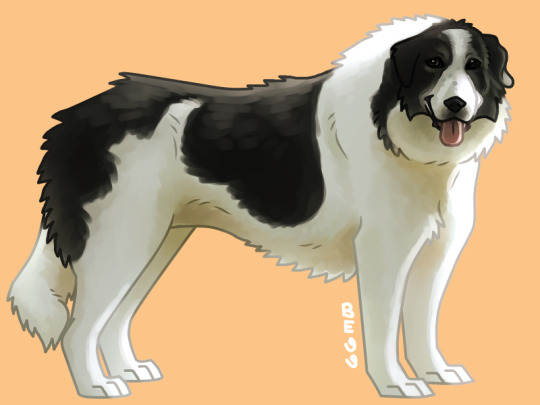
romanian dog breeds from 2022
on the top you have the carphatian and raven shepherds and on the bottom the mioritic and bucovina shepherds
71 notes
·
View notes
Text

might start printing these again and selling them! wondering if anyone will be interested..
(jewish tunisian woman / romanian shepherd)
95 notes
·
View notes
Note
Who are Huginn and Muninn???
They are two Romanian Raven Shepherd Dogs that the Voltaire Family own within their estate! I thought Huginn and Muninn were cute names for them— the Voltaire Family own a variety of different breeds, but those two are the ones that Scarlett is closest to (so I thought they fit within the ask).
25 notes
·
View notes
Text
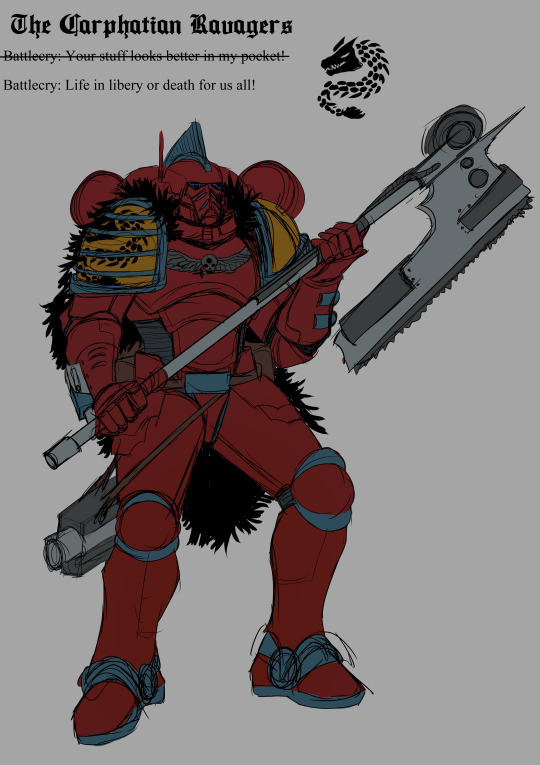
So yesterday on the discord channel someone started posted AI generated Romanian Space marines so I looked to see if some madman has done some actually good ones AND NOTHING!
So here are my Carpatian Ravagers (names still in work) and overall color scheme still in work.
The feather/fur black thingy is supposed to be the mantle of a shepherd (another thing to work on).
They have a chimeric gene seed formed of the Blood Angels, Space Wolves and Raven Guard.
They specialize in guerilla fighting and using their terrain to their advantage.
#art#character design#original character#warhammer#warhammer 40k#space marines#space marine oc#space wolves#warhammer legion#romania#digital art#sketch
19 notes
·
View notes
Note
Care e mâncarea lor preferată? (U can answer in english i just felt like talking in romanian to you♡)
lăcrămioară:
lăcrămioară preferâ dulciuri, ca de exemplu ursuleţi de gumă, arlechin, papanasi, poale'n brau, ROM, şi dulciuri străini e.g. Twinkies, Dairy Queen, apfelstrudel, schwarzwalder kirschtorte, etc. Însă, îi place hranelor sunt graşi, săţioşi, ori plin de carne. Sa mancare foarte de favorit e Brânză Moldova.
leopold:
Leopold era călugăr, deci postea şi se abţine de la carne. El nu poate să acel acum, dar preferă mancari vegitariani. El poate pretenţios, dar intotdeuana termina farfurie săi.
Virtue:
Virtue has a rather unique scaling of food preference; to her, "more taste" is better than "less taste". She also doesnt really distinguish between "edible" and "good to eat", so anything she cooks can be....quite unique in combinations.
Johnny:
Her favorite food is Shepherd's Pie, but she also loves anything fried
Cross:
He likes high-end cuts of meat, and he wants to try as many different types as he can.
#godhead death sentence#lacramioara strigoi#leopold lupei#sister virtue#johnny strings#cross deville#I ASSUME THIS IS ABT THE OC QUESTIONS I THINK I GOT THE GENDER/PERSON OF UR SENTENCE RIGHT...#also im so certain i fucked something up here dont look at me i got too ambitious#embarrassing amnt of tabs open
9 notes
·
View notes
Note
what breed of dog is georgie? She’s so cute and scrungly!!
(Also a guess - is she a border collie x terrier mix?)
thank you will give her a big forehead kiss from u!! <3 shes sooo scruffy LOL it kills me. also why are you literally so smart - she's a romanian shepherd which is very similar to a border collie x terrier mix though we're not sure which terrier. x
8 notes
·
View notes
Text
youtube
I love Eurovision season because I always learn things.
This year, it's Moldovan-Romanian folklore.
Moldova's entry, Soarele și Luna, is heavily influenced by Miorița, a poem/ballad/pillar of Romanian-old Moldavian folklore that goes back to the 1700s in its written form but probably goes back earlier.
Balada Miorița tells the story of three shepherds: a Moldovan, and a Wallachian and a Transylvanian who, jealous of the Moldovan, conspire to kill him.
The Moldovan's prized sheep Miorița (lit. little ewe), warns him - but the shepherd doesn't plan to fight back or escape. (Presumably bc shepherding in the Carpathians traditionally involved transhumance and living outdoors for months so... where's he gonna go?)
Instead, the shepherd asks Miorița to hide his death from the other sheep - and from his family - and to tell them instead that he went into the forest to marry a princess, with the sun, moon, and mountains standing as witnesses:
Soarele şi luna / Mi-au ţinut cununa. [...] Preoţi, munţii mari.
The Sun and Moon came down / to hold my wedding crown [...] The priests were the mountains high
(note: I'm working from some really sketchy translations; very open to better resources pls.)
Anyway, the description of the wedding is not only beautiful, but a fantastic allegory for the shepherd accepting death, laying down with his fate and embracing it instead of showing fear. Reclaiming agency to protect the people he loves (and redefine his own memory) in the face of an existential threat.
Wildly out of my depth at the point I'm reading about the role the story - and particularly the symbolism/iconography of the lone shepherd - played in Romanian independence, but I'm pretty sure it was a thing. Likewise, the choice of this material as a starting point for Moldova's ESC entry is very interesting to me.
Moldova's 2022 offering, Trenuleţul, used a train as an allegory for a pro-unification message (for.. obvious geopolitical reasons, in addition to the strong pan-Balkan cultural ones detailed in the song):
Pleacă trenul! Unde eşti?
Chişinău – București.
The train's route is East to West
Chisinau to Bucharest!
Idk if I'm now overthinking it too much (I got excited and I thought it was neat, okay?) but I just feel like the cultural overlap, the defiance and the energy of Pasha Parfeni's performance carries more symbolism than the entry is getting credit for. Unsurprising, given this is also the year of Croatian art rock political commentary via drag generalissimos and tractor-based analogies, but still.
Either way, I learned something new and found a new thing to read, and I thought it was beautiful. And that made me want to share. So... enjoy?
Iar tu de omor
Să nu le spui lor.
Să le spui curat
Că m-am însurat
Cu-o mândră crăiasă,
A lumii mireasă;
Că la nunta mea
A căzut o stea;
Soarele şi luna
Mi-au ţinut cununa.
Brazi şi paltinaşi
I-am avut nuntaşi,
Preoţi, munţii mari,
Of how I met my death,
Tell them not a breath;
Say I could not tarry,
I have gone to marry
A princess – my bride
Is the whole world’s pride.
At my wedding, tell
How a bright star fell,
Sun and moon came down
To hold my bridal crown,
Firs and maple trees
Were my guests; my priests
Were the mountains high;
(x) (x)
#esc 2023#soarele si luna#pasha parfeni#foklore#help i overthought and i can't get up#video#music#ngl i got into it bc pasha looks like every guy i've ever been to a green fair with or bought artisanal incense from#and it all got out of control from there#now i'm writing eurovision meta and having feelings about pastoral poetry#there's a bit where he asks his bone flute be placed in his grave to play when the wind blows across it#so the sheep will gather above where he rests#i think that's a classical allusion? but i have to go do productive things for a change so i won't have time to look into it#soarele si luna does have a killer flute break though#just saying
34 notes
·
View notes
Note
Do you have a favorite Georgian fairy tale? Any favorite mythical story?
Yes, of course ʕ→ᴥ←ʔ
1)Natsarqeqia - Basically, the main character here is similar to the Ash-Lad. But for your and my own sake i’ll just refer to the Natsarqeqia as the Ash-Raker.
Basically there are two versions of the story: First, Ash-Raker is a lazy, but a very witty lad. He sits near hearth all day, for days and rakes(?) the ashes, thats why people called him "Ash-raker”. Ash-Lad had good brothers who were actually doing their work. So they kind of kicked him out cause he wasn’t doing anything. He later comes across the Devi (Basically an Ogre). Ash-Raker tricks the Devi into thinking that he is stronger than him and he scares Devi and becomes owner of all the stuff that Devi owned.
I was doing research on this tale and apparently there is another version, but I wasn’t able to find it. In second version Ash-Raker is lay here too, but by his wife’s persistent action he slowly starts to work and becomes exemplary family oriented man. I really want to read or hear the full version :(
2)Tsiqara - This, this fairytale is just gold! One of the best fairytales about the friendship. There is a boy and he has a bull who is named Tsiqara that can talk, the boys mother died, so his father marries another woman. As you could guess his stepmother was evil. She wanted to get rid off Tsiqara so she pretended to be sick and told her husband that nothing will save her, only Tsiqara’s heart and liver will cure her. The boy hears that the father wants to kill his only friend so he and Tsiqara ran away. But the evil stepmother has sent a boar to kill them (In some version she mounts the boar and chases them), and there is a chase scene that is similar to the one in the Romanian fairytale that you’ve posted. So before, Tsiqara and the boy left they took three things with each other, and they used it when they were chased to get away from the boar. So they spilled the water from the jar and enormous sea appeared, then the boy throws away the comb and a very thick forest grows out and then finally Tsiqara tells him to throw away the sharpener and behind him a cliff that reached up to the sky raised up, the boar cuts steps into the cliff with all it’s might and goes up them, as it reached the middle it has slipped and fell into the abyss.
If you think that it’s the ending then you are wrong. Tsiqara puts the boy on the black poplar tree and gives him 2 Salamurs (wind instrument), the boy must blow into one if he’ll need Tsiqara’s help, the bull will come right away to his rescue. The other one is for celebration, whenever the boy will feel hungry he’ll blow into the salamuri and the food and the drink will appear for him.
The boy was playing on his celebration salamuri, the shepherd heard it, got jealous, tried to make the boy come down from the tree, but it failed, then he went to the king and told him about the boy. The king commanded to bring the boy, so old woman volunteered, she took the goat and collar awl went to the tree to and started piercing the goat, the boy called the old woman and asked what she was doing with the goat, she told him that she can’t slaughter the goat, so she asks the boy to do the kindness and help her. He comes down, woman uses magic and makes him fall asleep and king’s people take him and lock him up behind nine doors with locks. The boy wakes up, realizes that he messed up, but the problem is that he has left the salamurs on the tree, so he asks the crow to bring them to him, but the crow doesn’t cause the boy acted like a jerk and threw rocks at the crow while he tried to eat. Then the boy asks Sparrow for help, but sparrow is pissed too, because the boys would make traps for sparrows and destroy their nests, then the boy asked the swallow for help, the swallow felt sorry for the boy so it brough him the salamurs, the boy blew into the other one to call Tsiqara. Tsiqara heard it, went to rescue his friend and he broke 8 doors with lock, the problem is that while he tried to break the 9th door he broke his horn. Then the mouse came out of the hole from the wall and was like: What will you give me if I’ll help you to grow your horn back? Will you let me eat your flesh? And Tsiqara like a real friend said yes. So the mouse somehow made Tsiqara’s horn to grow and Tsiqara destroyed the 9th door and reunited with the boy.
There are different variations of the ending. The most child-friendly is one where the mouse saw what a good friends these two were and decided not to eat Tsiqara.
In other one Tsiqara took the boy and put him on the top of the tree again and went far away to repay his debt to mouse. Now this version has 2 different endings. 1)The sad one - boy after waiting for a long time came down from the tree and went searching for Tsiqara, he finds the corpse of his friend and killed by the grief he never uses his salamurs again. , yay! 2)Happy ending - The boy finds the corpse of his friend and cries, the mouse that ate Tsiqara’s flesh hears and comes and asks the boy if he would sacrifice his flesh in order to bring his friend back to life, and the boy says that yeah he’d would. That touched the mouse’s heartstrings and he decided to bring Tsiqara back to life for free, so the boy and Tsiqara lived happily ever after.

3) Land Demands What It Owns - I love this fairytale so much! It’s really sad that most people don’t know about it, because today the tale would be considered way too grim to read for kids.
There was widow who had a son, the boy saw that everyone had father but him so he asked mother about it. She tells him that his father is dead, but the kid doesn’t know what death is so he asks his mother about it. She starts to talk about the fact that death is a natural thing, but boy is now scared so he went to search for immortality. He met deer with the longest horns he had ever seen. Boy asked deer if it knew a country where death didn't exist, deer answered him that it had no idea. But if it's horns would reach the sky, then it would die. He offered the boy to stay, he would be alive as long as deer was alive too. The boy continued his way and met raven that flew above the gorge, he asked the crow if he knew a country where death didn't exist, it answered that he didn't know, but it would live as long as it's feathers (in some versions poop) didn't fill the gorge, it offered the boy to stay with it, then the boy would live as long as the crow did.
He found some castle. In it he found woman. He asked her the same question that he asked deer and raven. She told him that there is no such place. If he stayed with her only then he wouldn't die. But she doubted that he would be able to deal with immortality, after all, the land demands what he owns. He stayed with her for few days, but then he missed his mother and relatives. Woman told him that there wouldn't be even their bones left, but the boy didn't believe her, for him just 3-4 days have passed. Woman gave him 3 apples and told him to eat him one every time he felt sadness (in some versions she told him to eat it them all when he would arrive at his destination).
So he left. On his way back he found the gorge, it was filled with raven's feathers. He found raven's dried body. He gulped as he remembered the woman's words, he ate one apple, in one second he had a beard that reached his back. He continued his way, he saw deer and at that moment it's horns reached the sky and it died. The boy realized that the woman was right, truly, a lot time has passed. He ate another apple and he turned into an old, humped man, he loathed himself. He continued and finally reached his village, but he didn't recognize anyone. He asked villagers about his mother, but of course no one knew a thing about her. Then he found some old man, the boy learnt from him that one thousand year had passed. The boy went to the ruins of his house. He was filled with sadness, but he could barely move. He saw young lad and asked him to take out apple out of his pocket. Boy ate the apple and died. The villagers took a pity and buried the boy.
6 notes
·
View notes